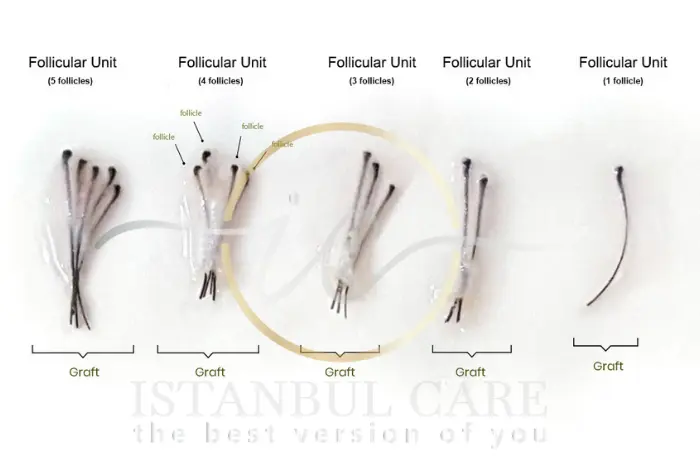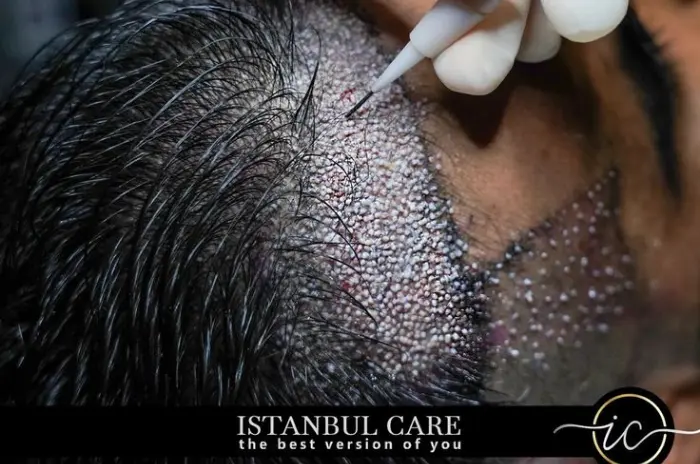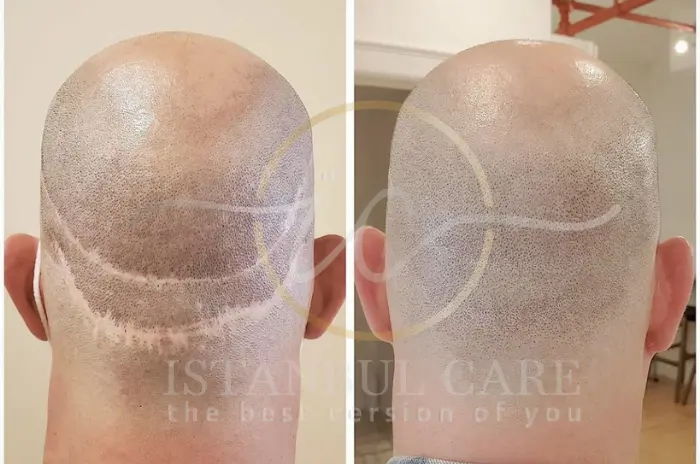Hair plugs were once the primary solution for hair loss, but they’ve been largely replaced by modern hair transplant techniques that offer more natural results. If you’re considering hair restoration or dealing with outdated hair plugs, understanding the differences between old and new methods is crucial for making informed decisions about your hair loss treatments.
Traditional hair plugs created an unnatural, “doll-head” appearance that many patients found unsatisfactory. Today’s advanced hair transplant surgery techniques like FUE hair transplant and DHI hair transplant provide dramatically improved results with minimal scarring and natural-looking hairlines. This comprehensive guide explores everything you need to know about hair plugs, their problems, and how modern hair transplant techniques can provide better solutions for male pattern hair loss and female pattern hair loss.

What Are Hair Plugs
Definition of Hair Plugs
Hair plugs were an early form of hair transplant procedure that involved removing large sections of scalp tissue containing multiple hair follicles and transplanting them to balding areas. Unlike modern hair transplant operations, hair plugs used circular punches to extract grafts containing 15-20 hairs each from the donor area.
The procedure was popular from the 1950s through the 1980s before being replaced by more sophisticated techniques. Hair plugs earned their name because the transplanted tissue literally looked like small plugs inserted into the scalp, creating an obvious and unnatural appearance that many patients regretted.
Why Hair Plugs Look Unnatural
The main reason hair plugs appear unnatural is their size and placement pattern. Traditional hair plugs created a “corn row” or “doll head” effect because:
- Large grafts containing multiple hairs were placed in uniform rows
- The circular punch method left visible round scars in both donor and recipient areas
- Hair grew in unnatural clusters rather than individual follicular units
- The hairline often looked harsh and geometric rather than soft and natural
The Problem with Traditional Hair Plugs
Traditional hair plugs presented numerous aesthetic and medical challenges. The large graft size meant that hair grew in obvious clusters, making it impossible to achieve the natural randomness of normal hair growth patterns.
Donor area scarring was another significant issue, as the circular punch method left permanent round scars that could be visible even with longer hair. Many patients experienced poor hair transplant results that required extensive revision work with modern techniques.
How Hair Plugs Work
Large Grafts of Around 20 Hairs
The hair plug technique involved using circular punches ranging from 3-5mm in diameter to remove tissue containing multiple hair follicles. Each graft typically contained 15-25 hairs, which is significantly larger than modern micro FUE techniques that transplant 1-4 hairs per graft.
This large graft size was necessary because surgeons lacked the microscopic technology and refined instruments available today. The procedure was faster than modern methods but sacrificed naturalness for efficiency.
Visible Scars and Doll-Head Appearance
Hair plugs created two types of visible scarring:
- Round punch scars in the donor area that remained permanently visible
- Corresponding circular marks in the recipient area where plugs were inserted
- The resulting “pluggy hair appearance” resembled a doll’s head with obvious hair clusters
Hair transplant scarring from plugs was often more noticeable than the original baldness, leading many patients to seek hair plug repair or removal procedures.
What Are the Problems with Hair Plugs?
Unnatural Hairlines
Hair plugs created harsh, geometric hairlines that immediately revealed the artificial nature of the hair restoration. Natural hairlines have:
- Irregular, random hair placement patterns
- Varying hair thickness and density
- Soft, gradual transitions from forehead to hair
Hair plugs lacked these subtle characteristics, creating obvious signs of hair transplant surgery that many patients found embarrassing.
Visible Scars and Patchiness
The punch technique used for hair plugs created permanent scarring in both the donor area and recipient sites. Donor area scarring appeared as multiple small circular scars that could be visible even with longer hair covering the area.
Patchiness occurred when some grafts failed to survive the transplantation process, leaving gaps between successful plugs. This created an irregular, moth-eaten appearance that was difficult to conceal.
Limited Styling Options
Patients with hair plugs faced significant limitations in hair styling:
- Hair had to be styled to minimize the appearance of obvious clusters
- Certain hairstyles would reveal the unnatural growth patterns
- Short haircuts were often impossible due to visible scarring
- The lack of natural hair density made many styling options unfeasible
What Is a Hair Transplant?
Modern Hair Transplant Techniques
Modern hair transplants represent a complete evolution from outdated hair plugs. Today’s hair transplant techniques focus on transplanting individual follicular units containing 1-4 hairs each, creating natural-looking results that are virtually undetectable.
The two primary modern methods are FUT (Follicular Unit Transplantation) and FUE (Follicular Unit Extraction). Both techniques provide superior results compared to traditional hair plugs while minimizing scarring and recovery time.
Key Benefits of Hair Transplants
Modern hair transplants offer numerous advantages over outdated hair plugs:
- Natural-looking hairlines designed to match your facial features
- Minimal scarring with proper healing and aftercare
- Higher survival rates for transplanted hair follicles
- Ability to achieve greater hair density in treated areas
- Compatible with all hair styling preferences and lengths
Hair Plugs vs Modern Hair Transplant
Natural Results with FUT and FUE
FUT and FUE hair transplant methods produce dramatically more natural results than hair plugs. FUT involves removing a strip of scalp from the donor area and dissecting it into individual follicular units under magnification.
FUE extracts individual follicular units directly from the donor area using specialized micro-punches. Both methods allow for precise placement of grafts to create natural hair growth patterns and density.
Reduced Scarring and Better Recovery
Modern hair transplant techniques significantly reduce scarring compared to hair plugs:
- FUE leaves only tiny dot scars that are virtually invisible
- FUT creates a linear scar that can be easily concealed
- Advanced closure techniques minimize scar visibility
- Faster healing times with less post-operative discomfort
Improved Aesthetic Outcomes
The aesthetic improvements of modern hair transplants over hair plugs are substantial:
- Natural-looking hairlines with appropriate density transitions
- Random, natural hair growth patterns that mimic normal hair
- Ability to achieve higher overall density in treated areas
- Results that are undetectable even to hair professionals
Look and Naturalness
Modern hair restoration achieves naturalness through several key factors:
- Grafts are placed at natural angles and directions
- Hair density gradually increases from the hairline backward
- Individual follicular units create realistic hair growth patterns
- Advanced hairline design considers facial proportions and age
How Do Hair Plugs Differ from Modern Hair Transplants?
Size and Shape of Grafts
The fundamental difference between hair plugs and modern hair transplants lies in graft size and composition:
Hair Plugs:
- Large circular grafts containing 15-25 hairs
- Uniform size and shape across all transplanted areas
- Created using circular punch tools
Modern Hair Transplants:
- Individual follicular units containing 1-4 hairs
- Variable graft sizes to match natural hair groupings
- Precise extraction and placement using microsurgical techniques
Results and Natural Appearance
The difference in results between hair plugs and modern hair transplants is dramatic:
Hair Plugs produced obvious, unnatural results with visible clustering and geometric patterns. Modern hair transplants create results that are indistinguishable from natural hair growth, even under close examination.
Technique and Equipment
Modern hair transplant surgery utilizes advanced technology and refined techniques:
- High-powered microscopes for precise graft preparation
- Specialized extraction tools for minimal tissue damage
- Computer-assisted hairline design for optimal aesthetics
- Advanced preservation solutions to maximize graft survival

Signs You Have Outdated Hair Plugs
Unnatural Hairlines and Patchy Results
If you have hair plugs from decades past, you may notice several telltale signs:
- Harsh, geometric hairlines with abrupt transitions
- Hair growing in obvious clusters or rows
- Patchy areas where some plugs failed to grow
- Unnatural hair direction and angles
These characteristics immediately identify hair plugs and can cause significant cosmetic concerns for patients.
Visible Plug Scars and Poor Density
Hair plug scars are often visible as:
- Small circular marks in the recipient area
- Round punch scars in the donor area
- Irregular texture and pigmentation changes
- Poor overall hair density despite transplanted areas
Modern hair transplant techniques can often improve these issues through revision procedures and additional grafts.
Common Side Effects of Hair Plug Surgery
Scarring and Unnatural Appearance
The most significant side effects of hair plug surgery included:
- Permanent circular scarring in donor and recipient areas
- Unnatural “doll head” or “corn row” appearance
- Poor graft survival rates leading to patchy results
- Inability to achieve natural hair density
These side effects were largely unavoidable with the technology and techniques available during the hair plug era.
Recovery Time and Risks
Hair plug surgery typically involved:
- Longer recovery times due to larger wounds
- Higher risk of infection from multiple large punch sites
- More significant post-operative pain and swelling
- Greater chance of complications compared to modern methods
Modern hair transplant procedures have significantly reduced these risks and recovery times.
Understanding Hair Transplant Techniques
FUT (Follicular Unit Transplantation) Explained
FUT, also known as the “strip method,” involves removing a section of scalp from the donor area and carefully dissecting it into individual follicular units. This technique allows for the harvest of large numbers of grafts in a single session.
FUT is ideal for patients requiring extensive hair restoration and those with good scalp elasticity. The procedure leaves a linear scar that can be concealed with longer hair in the donor area.
FUE (Follicular Unit Extraction): A Scarless Alternative
FUE hair transplant extracts individual follicular units directly from the donor area using specialized micro-punches. This technique leaves only tiny dot scars that are virtually invisible, making it ideal for patients who prefer short hairstyles.
FUE offers greater flexibility in donor area utilization and allows for body hair transplantation when scalp donor hair is limited.
Sapphire FUE Hair Transplant
Sapphire FUE represents an advancement in FUE technology, using sapphire blades to create recipient sites. The sapphire blades are sharper and create smaller, more precise incisions compared to steel blades.
Benefits of Sapphire FUE include faster healing, reduced tissue trauma, and potentially better graft survival rates.
DHI (Direct Hair Implantation)
DHI hair transplant combines extraction and implantation into a single step using specialized Choi Implanter pens. This technique allows for more precise control over graft placement angle, direction, and depth.
DHI may offer advantages in terms of graft survival and allows for denser packing of transplanted hair.
Choosing the Right Transplant Method
Factors That Determine the Best Technique For You
Several factors influence the choice between different hair transplant techniques:
- Extent of hair loss and number of grafts required
- Donor area characteristics and hair quality
- Lifestyle preferences and styling habits
- Budget considerations and available sessions
- Surgeon expertise and clinic capabilities
Why Technique Matters More Than Graft Numbers
The success of hair restoration depends more on proper technique than simply the number of grafts transplanted. Factors that matter most include:
- Precise graft placement for natural growth patterns
- Appropriate hairline design for your age and features
- Proper graft handling to maximize survival rates
- Artistic skill in creating natural density transitions
Which Method Looks More Natural?
Why Hair Transplants Offer Better Aesthetics
Modern hair transplants achieve superior aesthetic results through:
- Individual follicular unit transplantation matching natural hair groupings
- Precise hairline design using artistic principles
- Random, natural placement patterns avoiding geometric uniformity
- Ability to achieve appropriate density gradients
These factors combine to create results that are virtually undetectable, even to trained professionals.
Advances in Graft Placement and Hairline Design
Recent advances in hair transplant technology include:
- Computer-assisted hairline design for optimal proportions
- High-definition microscopes for precise graft preparation
- Specialized implantation tools for accurate placement
- Advanced preservation techniques improving graft survival
Are Hair Plugs Still Used Today?
Why Clinics Have Stopped Using Hair Plugs
Reputable hair transplant clinics have completely abandoned hair plugs in favor of modern techniques because:
- Patient satisfaction with hair plugs was consistently poor
- Modern methods produce dramatically superior results
- Hair plug complications and revision needs were high
- Medical standards now require more refined approaches
Any clinic still offering hair plugs should be avoided as they are not following current medical standards.
Better Alternatives to Hair Plugs
Modern alternatives to hair plugs include:
- FUE hair transplant for minimal scarring
- FUT for maximum graft yield in single sessions
- DHI for precise graft placement control
- Combination techniques for optimal results
These methods provide superior results with fewer complications and greater patient satisfaction.
Why FUE Is the Best Option Today
Refined Results and Less Scarring
FUE hair transplant has become the gold standard for hair restoration because it offers:
- Virtually scarless healing with tiny, undetectable marks
- Natural-looking results indistinguishable from normal hair
- Flexibility in hairstyle choices including very short cuts
- Reduced recovery time and post-operative discomfort
Customised Hair Placement
FUE allows for highly customized hair restoration:
- Individual graft placement for optimal naturalness
- Precise control over hair direction and angle
- Ability to create varying density patterns
- Custom hairline design matching facial features
Hair Plug Repair Options
Evaluating Plug Location and Direction
Hair plug repair begins with careful evaluation of existing plugs:
- Assessment of plug placement patterns and density
- Evaluation of hair direction and growth angles
- Analysis of donor area scarring and available hair
- Determination of repair versus removal options
Professional evaluation is essential for developing an effective repair strategy.
Camouflaging Hair Plugs
Some hair plugs can be improved through camouflage techniques:
- Adding individual grafts around plugs to break up patterns
- Strategic placement to create more natural transitions
- Hairline refinement with smaller grafts
- Density enhancement in surrounding areas
Removing and Repurposing Plugs
In some cases, hair plug removal and redistribution may be necessary:
- Careful extraction of existing plugs to preserve viable hair
- Redistribution of extracted hair in smaller, natural groupings
- Donor area repair to minimize scarring
- Multiple sessions may be required for complete revision
Cases When Removal Only Is Best
Sometimes complete hair plug removal without redistribution is the best option:
- When plugs are poorly positioned or severely damaged
- If donor area hair is insufficient for redistribution
- When patient prefers to start fresh with modern techniques
- If medical complications make revision inadvisable
Scars from Hair Plugs
Donor Area Scarring Issues
Hair plug scars in the donor area present unique challenges:
- Multiple circular punch scars create a “moth-eaten” appearance
- Scars may be visible even with longer hair coverage
- Reduced hair density in donor area affects future options
- Scar tissue may complicate modern transplant procedures
Professional evaluation is essential for determining repair options.
FUT vs FUE for Scar Repair
Both FUT and FUE can be used for hair plug scar repair:
FUT Advantages:
- Can harvest large numbers of grafts for extensive repair
- May be more cost-effective for major revisions
- Allows for precise graft preparation under magnification
FUE Advantages:
- Avoids additional linear scarring
- Can harvest grafts from areas between existing scars
- Provides more flexibility in treatment planning

Are You a Good Candidate
Who Might Still Consider Hair Plug Revision
Good candidates for hair plug repair include:
- Patients with stable hair loss patterns
- Those with adequate donor area hair for revision
- Individuals with realistic expectations about results
- Patients committed to proper post-operative care
When Hair Plugs Aren’t Used Anymore
Hair plugs are no longer used because:
- Modern techniques provide dramatically superior results
- Patient satisfaction rates are much higher with current methods
- Complications and revision needs are significantly reduced
- Medical standards now require more refined approaches
Who Is Suited to Modern Methods
Most patients with hair loss are good candidates for modern hair transplant techniques:
- Male pattern hair loss patients with stable donor areas
- Female pattern hair loss patients with appropriate patterns
- Those seeking natural-looking hair restoration results
- Patients with realistic expectations about outcomes
Hair Transplant Techniques Compared
FUE vs. FUT: Which Is Better for You?
The choice between FUE and FUT depends on individual factors:
FUE is better for:
- Patients preferring short hairstyles
- Those with tight scalp elasticity
- Athletes or active individuals
- Patients requiring smaller numbers of grafts
FUT is better for:
- Extensive hair restoration requiring many grafts
- Patients comfortable with longer hair in donor area
- Those seeking maximum graft yield per session
- Budget-conscious patients needing large numbers of grafts
The Latest Advances in Hair Restoration
Recent advances in hair transplant technology include:
- Sapphire FUE for improved healing and precision
- DHI techniques for enhanced graft placement control
- Platelet-rich plasma (PRP) therapy to enhance results
- Advanced graft storage solutions improving survival rates
Choosing the Right Hair Transplant Clinic
Why Experience Matters in Hair Restoration
Selecting an experienced hair transplant clinic is crucial because:
- Hair restoration requires both medical expertise and artistic skill
- Experienced surgeons achieve higher graft survival rates
- Proper hairline design requires extensive training and experience
- Revision of poor results is more difficult than initial good work
Questions to Ask Before Getting a Hair Transplant
Important questions for potential hair transplant patients:
- How many procedures has the surgeon performed?
- Can you see before and after photos of similar cases?
- What hair transplant cost is involved and what does it include?
- What is the clinic’s graft survival rate and patient satisfaction?
- How will the hairline design be customized for your features?
Repairing or Replacing Hair Plugs
Can Hair Plugs Be Fixed with Modern Transplants?
Most hair plugs can be improved using modern hair transplant techniques:
- Strategic placement of individual grafts to break up plug patterns
- Hairline refinement using natural follicular units
- Density enhancement in areas between existing plugs
- Complete removal and redistribution when necessary
The success of hair plug repair depends on the quality and quantity of existing hair and donor area resources.
Achieving a Natural Look After Hair Plug Repair
Creating natural results from hair plug repair requires:
- Careful evaluation of existing hair patterns and direction
- Strategic graft placement to create random, natural groupings
- Multiple sessions to achieve optimal density and naturalness
- Patience during the healing and growth process
Hair Transplant Results & Recovery
What to Expect After Your Procedure
Hair transplant recovery typically involves:
- Initial healing period of 7-10 days with minimal activity
- Shedding of transplanted hair in weeks 2-4 (normal process)
- New hair growth beginning around month 3-4
- Significant improvement visible by month 6-8
- Final results apparent at 12-18 months post-procedure
How Long Until You See Final Results?
Hair transplant results timeline varies but generally follows this pattern:
- Month 1-3: Healing and initial shedding phase
- Month 3-6: New hair growth begins, fine and thin initially
- Month 6-12: Progressive thickening and lengthening of hair
- Month 12-18: Final results with full density and maturation
Patience is essential as hair restoration is a gradual process that cannot be rushed.
Pros and Cons of Hair Plugs and Transplants
Advantages of Hair Plugs (Cost, Speed)
Historical advantages of hair plugs included:
- Lower initial hair transplant cost compared to modern methods
- Faster procedure times due to larger graft sizes
- Simpler technique requiring less specialized training
- Availability when modern techniques weren’t developed
Disadvantages of Hair Plugs (Unnatural Pattern)
Significant disadvantages of hair plugs:
- Unnatural, obvious appearance that couldn’t be concealed
- High rate of patient dissatisfaction and revision needs
- Permanent scarring in both donor and recipient areas
- Limited styling options due to unnatural growth patterns
- Poor long-term aesthetic outcomes
Advantages of Modern Transplants (Realistic Results)
Modern hair transplant advantages:
- Natural-looking results indistinguishable from normal hair
- Minimal scarring with proper healing
- High patient satisfaction rates
- Compatibility with all hairstyle preferences
- Improved graft survival rates and density achievement
Disadvantages of Modern Transplants (Cost, Time)
Potential disadvantages of modern hair transplants:
- Higher hair transplant cost than historical methods
- Longer procedure times due to precise technique requirements
- Multiple sessions may be needed for extensive hair loss
- Requires significant patience for final results to develop
Hair Plugs vs Modern Hair Transplants Comparison Table
| Aspect | Hair Plugs (Old Method) | Modern Hair Transplants (FUE/FUT) |
|---|---|---|
| Graft Size | 15-25 hairs per graft | 1-4 hairs per follicular unit |
| Appearance | Unnatural, “doll-head” effect | Natural, undetectable results |
| Scarring | Visible circular punch scars | Minimal (FUE) or linear scar (FUT) |
| Hairline Design | Geometric, harsh lines | Soft, natural, customized design |
| Recovery Time | 2-3 weeks | 7-10 days |
| Graft Survival Rate | 60-70% | 90-95% |
| Styling Options | Very limited | All styles possible |
| Cost | Lower initial cost | Higher but better value |
| Revision Rate | 70-80% needed repairs | Less than 10% need touch-ups |
| Patient Satisfaction | Poor (30-40%) | Excellent (95%+) |
FUE vs FUT Technique Comparison Table
| Factor | FUE (Follicular Unit Extraction) | FUT (Follicular Unit Transplantation) |
|---|---|---|
| Scarring | Tiny dot scars, virtually invisible | Linear scar, easily concealed with hair |
| Graft Yield | 2,000-4,000 grafts per session | 3,000-5,000+ grafts per session |
| Recovery Time | 5-7 days | 10-14 days |
| Hair Length Required | Can be done with very short hair | Requires longer hair to cover linear scar |
| Cost | Higher cost per graft | Lower cost per graft |
| Procedure Time | 6-8 hours for large sessions | 4-6 hours for large sessions |
| Donor Area | Distributed harvesting | Strip removal from specific area |
| Future Procedures | Easier repeat procedures | May limit future FUT procedures |
| Exercise Restrictions | Resume activities in 1 week | Avoid heavy lifting for 2-3 weeks |
| Best For | Athletes, short hairstyles | Extensive hair loss, budget-conscious |
Speak with our expert Hair Transplantation specialists

Speak with our expert Hair Transplantation specialists
We’re ready to answer your questions
FAQs for Hair Plugs Problems, Side Effects and Modern Solutions
Hair plugs were large circular grafts containing 15-25 hairs each that created obvious clustering and geometric patterns, making them easily identifiable as artificial hair restoration.
Modern FUT and FUE hair transplant techniques use individual follicular units containing 1-4 hairs each, creating natural randomness and eliminating the obvious clustering of hair plugs.
No, reputable hair transplant clinics have completely abandoned hair plugs in favor of modern FUE and FUT techniques that provide dramatically superior results.
Common side effects included permanent circular scarring, unnatural appearance, poor graft survival rates, longer recovery times, and higher risk of complications compared to modern methods.
Both FUT and FUE offer excellent natural results, but FUE provides virtually scarless healing while FUT leaves only a thin linear scar that’s easily concealed.
Yes, most hair plugs can be improved through strategic placement of individual grafts, hairline refinement, or complete removal and redistribution using modern techniques.
Expect initial healing in 7-10 days, temporary shedding in weeks 2-4, new growth starting at 3-4 months, significant improvement by 6-8 months, and final results at 12-18 months.
The main problems include unnatural hairlines, visible circular scarring, obvious hair clustering, limited styling options, and poor overall aesthetic results that often looked worse than the original baldness.

